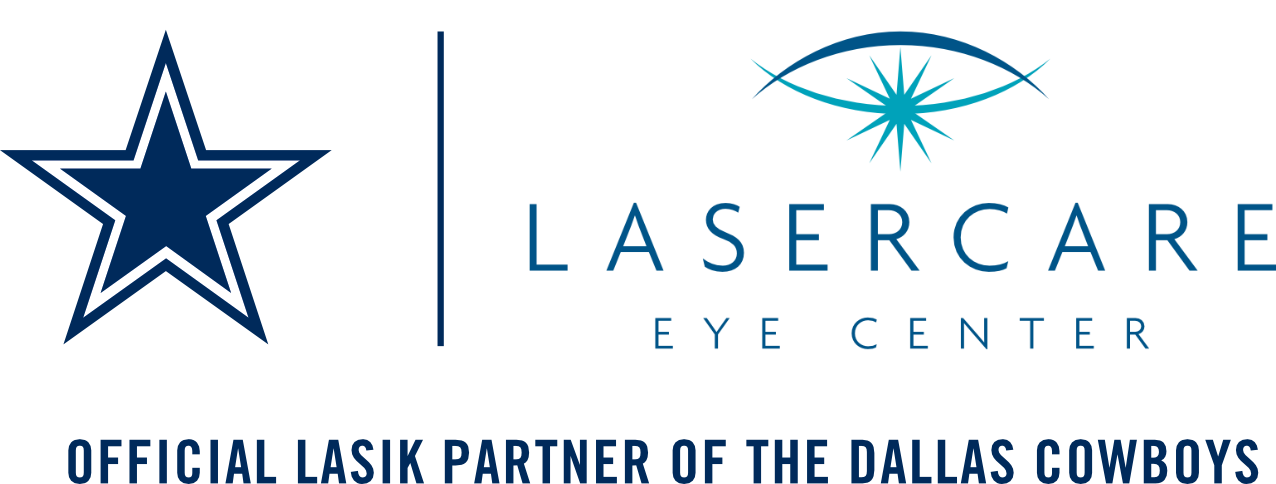Everything You Need to Know About Cataract Surgery

Cataract surgery is a procedure to remove the lens of your eyes when it becomes cloudy. In most cases, the cloudy lens is replaced with a clear artificial lens, called an intraocular lens (IOL).
Your natural eye lens is designed to refract light rays that enter the eye, helping you see. In order to see clearly, your eye lens needs to be clear as well. However, the presence of a cataract can make your vision cloudy or blurry – almost as if you’re looking through a foggy windshield. The only way to treat a cataract is via surgery.
What is a Cataract?
A cataract is a cloudy region in the natural lens of your eye that can make your vision blurry and the objects you see appear less colorful. Cataracts can also increase the glare from lights. A cataract can affect one or both your eyes and it cannot be spread from one to the other. It’s a painless condition that is typically related to aging. More than half of the American population has either had a cataract or a cataract surgery by the age of 80.
However, cataracts being age-related can be misleading. Some people can have cataracts between the ages of 40 and 50, but the cataracts are so small at this stage that it may not affect their vision. It’s usually after the age of 60 when cataracts begin causing vision-related issues.
What is a Lens?
The eye lens is a clear region of the eye that refracts light and helps focus an image on the retina. Your retina is sensitive to light and is located at the back of the eye. In the case of a normal lens, light will pass through it to reach the retina.
When light reaches the retina, it will be converted to nerve signals that are then transmitted to the brain to form an image. The eye lens has to be clear in order for the retina to perceive a sharp image. A cloudy lens due to a cataract will cause the image to appear blurred, thus affecting your vision.
What Causes a Cataract?
Your eye lens, located behind the iris and the pupil functions similar to a camera lens. The lens focuses light onto the retina and helps form an image. Your lens also has the ability to focus images to help you see nearby and far away objects clearly.
The lens in our eyes is primarily made of protein and water. The protein is arranged in a specific way to keep the lens clear and allow light to pass through.
However, with age, it is common for some of the protein that forms the lens to clump together, creating a clouded region in the lens – also called a cataract. The cataract may grow with time, clouding the lens even further and making it increasingly difficult for the sufferer to see.
The lens can also slowly change color and turn more yellow-brown. As the cataract progresses, your vision may have a brownish tint. In the beginning, the level of tinting that occurs may not affect the sharpness of the image formed in the retina or cause severe vision problems. However, as the tinting increases over time, it may become difficult to read or identify purples and blues.
According to some researchers, there are several reasons that might contribute to a cataract, such as diabetes, smoking or changes in protein structure that may occur as a result of wear and tear of the lens with age.
Symptoms of a Cataract
The following are the most common symptoms of a cataract:
- Cloudy, blurry or unclear vision.
- Colors don’t appear vibrant or seem faded.
- Excessive glare from lights. Sunlight and light from lamps and headlights may seem too bright.
- Halo around lights.
- Double vision or multiple images in the affected eye. This may clear as the cataract progresses.
- Frequent changes in prescription for your contact lenses or eyeglasses
The above symptoms may also indicate the presence of other eye problems. Therefore, consult your healthcare provider if you have any of these symptoms.
Types of Cataract
Most cataracts are age-related. However, there are some other types of cataract, such as:
- Secondary Cataract. This may form after surgery for a different eye problem, such as glaucoma. Secondary cataracts may also develop in individuals with other health issues, such as diabetes. Steroid use may also be associated with cataract formation.
- Congenital Cataract. Some children are born with cataracts or develop them during childhood. This type of cataract usually affects both eyes, but they’re so small that may not affect vision. If vision is poor, your lenses may have to be removed.
- Traumatic Cataract. This type of cataract may develop following an eye injury. In some cases, it may occur even years after the incident.
- Radiation Cataract. May develop after exposure to certain types of radiation.
How Are Cataracts Detected?
Cataracts are detected via an extensive eye exam, which includes:
- Visual Acuity Test. This is an eye chart test that will assess your vision at different distances.
- Dilated Eye Exam. Your eye care professional will place drops in your eyes during this test to widen them, following which they’ll check your retina and optic nerve via a magnifying lens for any signs of damage or eye issues. You may experience blurry close-up vision for several hours after this exam.
- Tonometry. Numbing drops will be placed on your eye to measure the pressure inside it using a special instrument.
These tests may be performed in conjunction with other tests to fully determine the health and structure of your eye.
Why Cataract Surgery is Done
The purpose of cataract surgery is to treat cataracts and improve vision. Cataracts lead to blurry vision, faded colors and increased glare from lights. If your cataract is making it difficult to read or carry out your daily activities or is interfering with your treatment for a different eye condition, your doctor may recommend cataract surgery.
Doctors may also recommend cataract surgery if your eye doctor is having difficulty examining the back of your eye in order to check or treat other eye conditions, such as diabetic retinopathy or age-related macular degeneration.
Note that you have time to consider your options as waiting to have cataract surgery done will not affect your eyes. In fact, if your vision is not affecting your everyday life, you may not need cataract surgery for several years.
The following are some questions to keep in mind while considering cataract surgery:
- Do you have issues watching television, reading from a computer or reading a book?
- Can you see to safely drive or perform your everyday activities?
- Are you having difficulty cooking, climbing stairs, taking medications or shopping for groceries?
- Are bright lights making it more challenging for you to see?
- Is your vision problem affecting how independent you feel?
Choosing Between Traditional and Laser-Assisted Cataract Surgery
If you are considering cataract surgery, you may be offered to choose between two surgical procedures namely, traditional cataract surgery and laser-assisted cataract surgery. Traditional cataract surgery is the more common surgical procedure and is known to be effective and safe. Laser cataract surgery may be more beneficial when it comes to consistency and precision, but it is more costly and isn’t covered by most insurance plans.
Recovery Period
Note that the recovery period for both procedures is the same. While some people may see clearly right after cataract surgery, others may take 1-2 weeks to restore complete vision.
Traditional Cataract Surgery Basics
Also called phacoemulsification, traditional cataract surgery involves an eye surgeon creating a tiny incision in the cornea using a scalpel blade. The surgeon will then insert a microsurgical instrument into the region behind the pupil, where the lens is enclosed in a lens capsule. This will create a circular opening in the capsule. A special probe will be inserted through this opening to apply ultrasound waves to break up the cloudy region in the lens. The broken pieces are then suctioned out.
The natural cloudy lens will be replaced with an artificial intraocular lens (IOL) to rectify blurry vision. The sides of the corneal incision will be filled with a self-seal following surgery. Stitches are rarely needed during this procedure.
Laser-Assisted Cataract Surgery Basics
A camera or ultrasound imaging device will be placed over your affected eye to record its surface and collect information regarding the lens. The device will send information to a computer that will allow it to precisely program the laser for the correct size, depth and location of the incisions required.
Instead of a scalpel in the case of traditional cataract surgery, the surgeon will use a laser to make an incision in the cornea and create an opening in the lens capsule. The laser may also help soften the cataract. A probe that applies ultrasound will be inserted just like in traditional cataract surgery to break up the cataract, in order for it to be suctioned out of the eye. Next, the IOL is implanted and the corneal incision is sealed without stitches.
Who is a Good Candidate for Laser-Assisted Surgery?
Today’s Medicare guidelines suggest that only some patients can be offered laser-assisted cataract surgery. Laser-assisted cataract surgery is typically recommended to people who may be diagnosed with astigmatism during their cataract consultation and would like to have their refractive error rectified during surgery. The laser will be used to generate specific corneal incisions to reshape the cornea and help treat astigmatism.
Laser treatment may also be offered to you if you opt for a premium lens, such as a multifocal IOL or an astigmatism-correcting toric IOL, as it allows surgeons to map out the lens capsule and open it more precisely.
Risks and Precautions
Some risks associated with cataract surgery are common to all types of surgery and anytime an anesthetic is used. Risks are dependent on several factors, such as your own medical condition and the type of surgery being performed. Even though side effects such as infection, bleeding, breathing issues and the side effects of anesthetic use are possible, they are very rare.
In general, cataract surgery is considered to be a safe and effective procedure, but it may have some risk of complications, such as:
- Bleeding
- Reduced vision
- Infection
- Increased eye pressure
- Inflammation
- Glaucoma
- Retinal detachment. Symptoms may include specks floating in your field of vision or sudden light flashes
If you notice any side effects or complications, contact your eye doctor immediately. You must also contact your doctor if you experience nausea, vomiting or eye redness, loss of vision or pain that continues despite using pain-relief medication.
Speak to your doctor if you have any concerns regarding the risks associated with cataract surgery.
Cataract Surgery Cost
If you are Medicare eligible, costs for cataract surgery will generally be covered. Cataract surgery costs are typically covered by private insurance as well.
Medicare and private insurance plans will cover your cataract surgery costs if your vision tests show a certain level of clarity and acuity. Note that even if your surgery cost is covered, there may be some other costs that you will have to take care of. For example, special types of IOLS cost more. If you decide to have cataract surgery before your vision has declined to a certain extent, it will cost more.
However, in some cases, it can be possible to receive coverage before meeting any vision or age requirements. Consult your ophthalmologist if you are planning to treat your cataract at an early stage.
If you don’t have private insurance or Medicare coverage, you may still be able to manage or reduce cataract surgery costs. Discussing payment plans at your doctor’s office and checking if your employer offers flexible spending accounts can also help.






